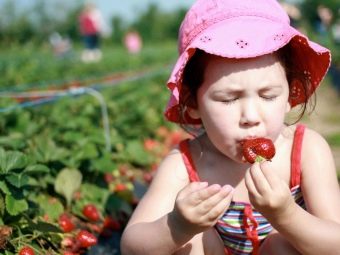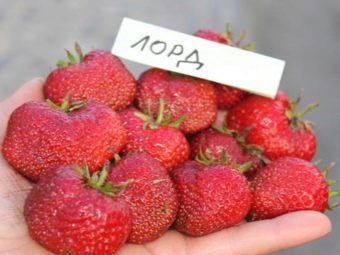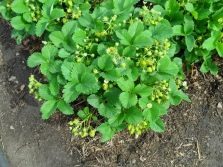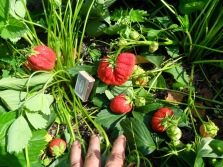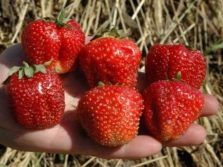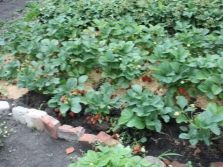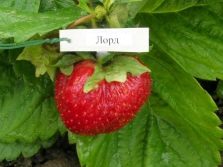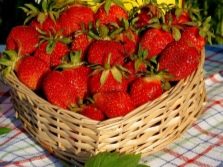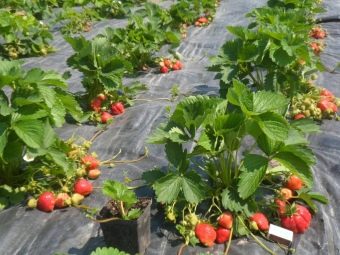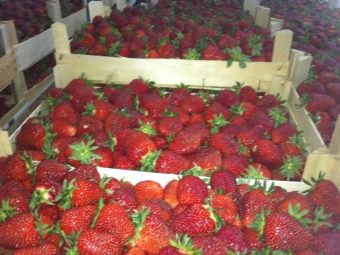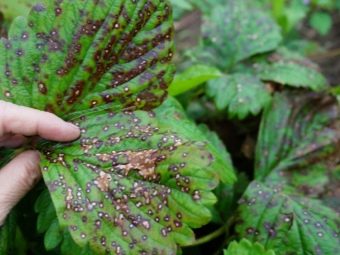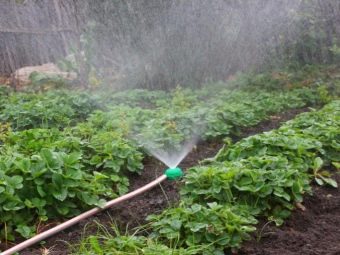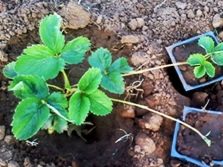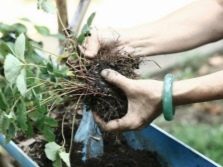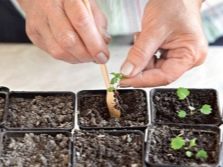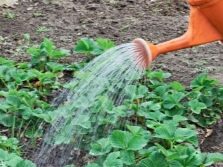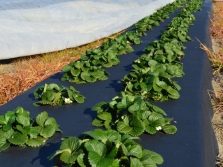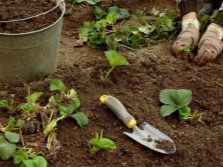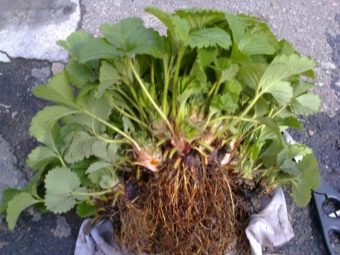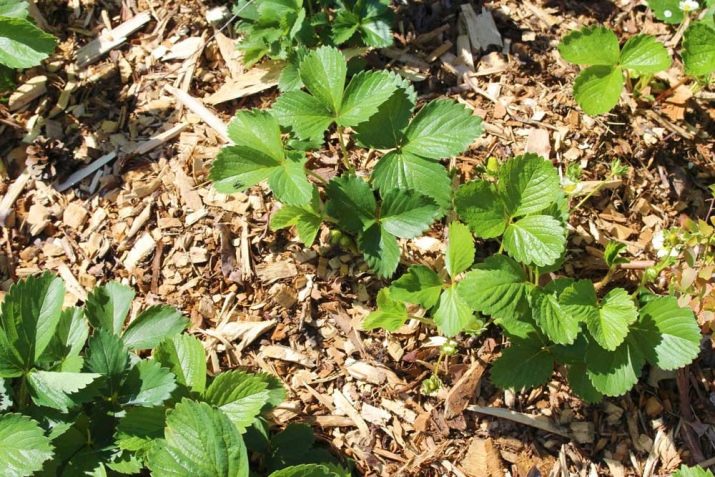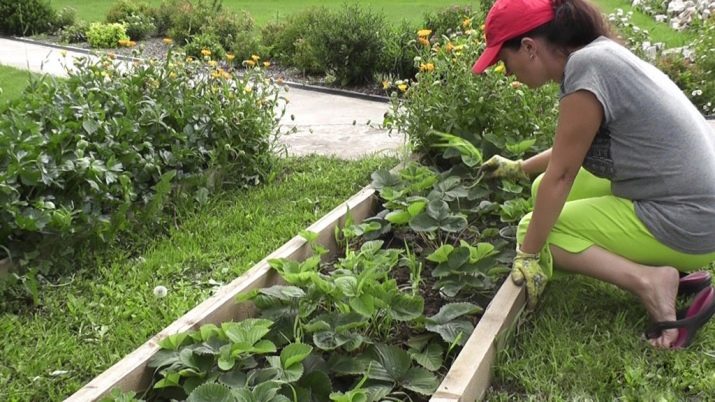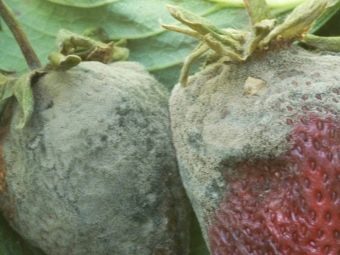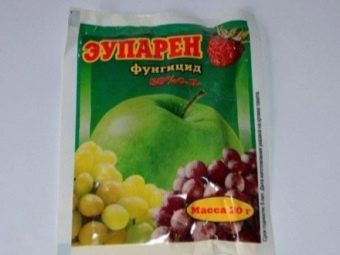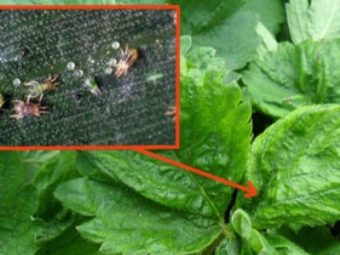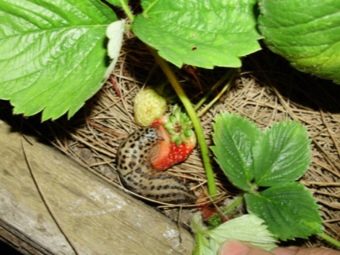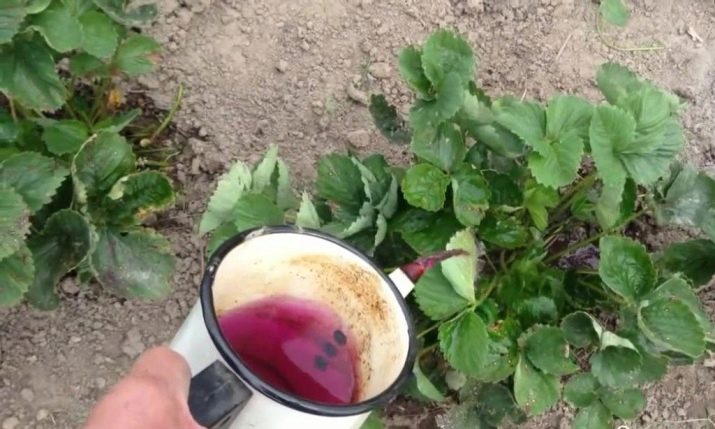Strawberry "Lord": characteristics and agricultural cultivation
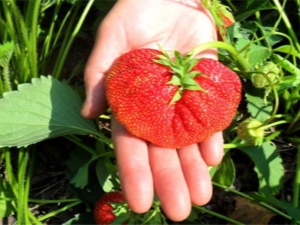
Strawberries or, as it is also called, garden strawberries are a very popular berry crop.Most varieties are quite unpretentious in the care and hardy to growing conditions. Of great value are the taste qualities of the fruits of garden strawberries. The berries are very useful fresh, and are also used to make sweet homemade preparations. The article will describe the features of the strawberry "Lord".
Variety description
Garden strawberries "Lord" was bred in Europe. British breeders have worked to create an unpretentious variety that would give the crop with excellent taste. At the moment, the hybrid "Lord" is popular not only in European countries. Many summer residents and gardeners prefer to grow this garden strawberry on the plot. Variety "Lord" is mid-season, long fructifying. The culture is not remontant, that is, it gives a crop once a season. Berry ripening occurs in the second half of June and lasts on average for at least 3 weeks.
The shrubs of the plant are quite high, they can reach 50 cm. Strawberry "Lord" has a rather dense and branchy overgrowth, it develops many cuttings, the so-called whiskers. Foliage has a bright green color. By the end of the season, leaves grow dull and turn reddish or reddish. Each bush produces a large number of sturdy flower stalks. There are at least 10 of them on one plant. Under the weight of ripening berries, branches often bend down to the ground.
Therefore, after the formation of ovaries, it is recommended to provide a garter with fruit-bearing branches. With a sufficient height of the bush, you can strengthen the branches with small props.
Berries of garden strawberries "Lord" are large, weighing from 15 grams. Under favorable conditions of ripening, the weight of one fruit can reach 80-100 g. Ripened berries have a very bright red color. The flesh of the fruit is juicy, has a deep aroma and sweet taste with a slight sourness. 11% of sugars, 1.4% of various acids, as well as a large amount of vitamin C are contained in strawberry berries of the “Lord” variety. Tasterists gave a positive characteristic of the taste of this culture. Strawberry "Lord" received 4.9 points out of 5.
The berries of this variety have a very dense structure. Because of this, they tolerate transportation quite well. The fruits have a universal culinary purpose. This strawberry can be used for preservation, heat processing, cooking desserts and decorating dishes, as well as for fresh consumption. Typically, varieties of berry crops that have large fruits, do not differ "longevity."
Garden strawberries require renewal every 3-5 years. However, the variety "Lord" in this sense is a pleasant exception to the rule. With the observance of the rules of agricultural engineering and favorable conditions for cultivation, strawberries of this variety can bear fruit well for up to 10 years. In 2-3 years after disembarkation from one bush it is possible to remove up to 1.5 kg of berries. The average yield of garden strawberries "Lord" is 150-190 c / ha.
Advantages and disadvantages
The variety of strawberries "Lord" has a lot of positive properties and characteristics. They relate to the quality of the crop, and plant resistance to external conditions. The most significant advantages of strawberries in this class are as follows.
- High and stable yield.
- Strawberries of this variety have rather strong immunity to diseases. In particular, it is resistant to damage from rot and strawberry mite.
- The fruits have an attractive appearance. Berry tolerates transportation. Variety "Lord" is the best option for growing crops for sale.
- A berry bush can bear fruit on one planting site for up to 8-10 years.
- Culture is winter hardy. The plant is able to tolerate frosts up to -30 degrees without additional shelter. It does not harm him and the late spring frosts falling in May on the territory of the middle zone.
- The plant is undemanding to care.Even a novice gardener can grow such garden strawberries and get a good harvest.
Weaknesses and disadvantages of the variety are also present.
- The taste qualities of berries strongly depend on the weather conditions that accompany the period of fruit ripening. When rainy and cool weather, strawberries do not pick up sweets, berries noticeably shallow and have a sour taste.
- Due to the large size of the fruit inside have a relatively large cavity.
- The culture has a weak resistance to leaf spot disease. Adult plants require additional preventive treatment from this pathogen.
- Bushes do not tolerate dampness and stagnation of moisture in the soil.
- Berries on long-fruiting bushes (more than 5-6 years), gradually lose their pronounced flavor, become more fresh to taste.
Landing
Strawberry "Lord" does not tolerate a wet, swampy soil. Culture demanding light, prefers sunny areas. Garden beds should be protected from drafts. Saline soils and calcareous substrates are extremely unsuitable for strawberry cultivation. Also, this culture does not tolerate excessively acidified soil.
When preparing beds and landing holes in the soil is to make a solution of ammonia. This will scare off the parasites. Best of all, the plant survives and develops on soils rich in humus. The landing should be carried out according to the chess scheme. This is due to the fact that adult perennial bushes give extensive growth and abundantly spread mustache. Landing should be removed from the beds with other strawberry courts. This will avoid cross-pollination and loss of taste of the crop.
Garden strawberries "Lord" can multiply by three methods: seeds, breeding whiskers, dividing the roots of the bush. For seed propagation, you must first prepare the seed. From the harvest are selected the largest berries. Fruits are gently pounded and dried.
From pulp the necessary quantity of seeds is separated. They need to hold for several days in a warm dry place, then put away for storage.
The optimal time for landing on seedlings is from January to March. Seeds are soaked in water until signs of germination appear. Planting is done in prepared containers or pots with soil. Emerged shoots thinned. Strawberry seedlings before planting on a permanent place must be tempered, bringing it to the open air in warm weather.
Breeding with a mustache is done in summer. Strong shoots of young bushes are selected as planting material. There must be at least 2 leaflets on the whisker. The length of the roots of the process must be at least 1.5 cm. The whiskers are carefully separated from the plant and transplanted to a previously prepared garden bed. Between them should be kept at least 12 cm.
In the first week, transplanted processes should preferably be covered from direct sunlight. Required daily evening watering. Also a good help for the development of the root system of young plants is the introduction of ash, fertilizing with mineral fertilizers.
A sign that the planted mustache landed safely, is the growth of leaves on them. After the first week, at least one new leaf should appear on each sprouted process.
After that, watering can be reduced to once in 3 days. Also, there is no need for shelter from the sun. To further maintain the planted material can be applied organic fertilizer. By the end of the summer season, the root system should be sufficiently developed, and young bushes appear from 5 to 7-8 leaves.
The last way of breeding strawberries is the division of the roots. For this procedure, suitable for young and healthy bushes aged 2 to 4 years. Reproduction by this method can be carried out in spring or autumn. Under the transplant separated roots should be prepared in advance the necessary number of holes.
Selected young strawberry bushes are carefully dug. Digging should be wide and deep to cause minimal damage to the root system. The roots extracted from the soil should be divided approximately in half with the above-ground green part. Further separated roots are planted in the wells. In the first week, plantings are shown daily watering.
Growing up
As mentioned above, the strawberry variety "Lord" is not particularly capricious plant. The basic rules of agricultural engineering are similar to the general requirements for the care of similar berry crops. It is worth paying attention to watering. In the period of flowering, ovary and ripening the soil should not dry out. The best option is drip irrigation. It allows you to evenly wet the top layer of soil. When using this method of irrigation eliminates stagnant moisture in the soil.
Many gardeners grow garden strawberries "under the film." For this, a piece of dense polyethylene closes the soil in the garden. In the film, holes are made for berry bushes. Thus, the leaves and fruits of strawberries are above the film, and the soil between plantations remains closed with polyethylene. Watering plants produced directly under the bush. The use of polyethylene coating greatly facilitates the collection of fruits and the care of strawberry plantations.
An alternative to the cultivation method described above is the mulching of the beds. Sawdust, needles or dry grass can be decomposed between plants. Such a mulch layer will prevent weed germination, as well as protect the soil from drying out in hot weather. During the season, it is desirable to at least 4 times apply organic fertilizer to the soil, combining them with loosening the soil.
Garden strawberries respond well to humus, compost, chicken dung.
The intense formation of a mustache greatly weakens the berry bush. If reproduction is not planned by the processes, the mustache should be trimmed. On the bushes, which will be taken from planting material, you can leave 1-2 antennae. Due to the fact that the “Lord” is a “long-liver” among similar crops, regular soil renewal is required at the cultivation site. It is ensured by the abundant introduction of organic matter into the soil in the fall and spring.
For the prevention of attacks of pests near the beds with plantings of strawberries, you can plant herbs and flowers that repel parasites: parsley, garlic, marigold, marigolds. Between the plants is to decompose the twigs of wormwood. Like any garden crop, strawberry “Lord” likes regular weeding. It is advisable to loosen the soil in the root zone after each irrigation so that a dry crust does not form on its surface. In addition, loose soil well carries oxygen and nutrients to the root system of plants. Many experienced gardeners pick off the first flower stalks on strawberry bushes. From the resulting new flowers in the future are formed larger berries.
Diseases and pests
None of the plants, unfortunately, does not have absolute immunity against any diseases. Strawberry "Lord" is also no exception. Despite its immunity to many pathogens, some pests and diseases can all harm the culture.
- Gray rot - a fungal disease affecting all terrestrial parts of the plant. Its sign is the appearance on the berries, leaves or stem of a gray plaque, similar to mold. The increased humidity of the air and soil most often leads to the development of this disease. To combat the fungus used an aqueous solution of mustard powder (100 g of mustard in a bucket of water). For the best effect, the solution is desirable to insist at least a day. The resulting composition is necessary to spray the bushes in the evening during dry calm weather. The affected parts of the plant must be removed and destroyed.
- Nematode manifested in the form of white spots on the foliage and stem. Disease leads to loss of quality and quantity of the crop.The most effective drugs to combat this disease are Chorus and Euparin.
- Strawberry Mite is a pest insect. He himself is almost invisible to the eye. But the result of his life is twisting and mass drying of the leaves. To combat the parasite drug is used "Aktellik." It must be diluted with water according to the instructions and spraying the plants affected by the mite.
- Snails and slugs not averse to eat juicy fruits. Sometimes these insects can be seen on the berries of garden strawberries. Dusting unwanted voracious guests will help dusting the fruit and foliage with cornmeal.
Do not forget about the benefits of preventive measures to prevent the development of diseases and pest attacks. Among popular methods, the following recipes have proven themselves well:
- to improve plant immunity and get rid of pest larvae on foliage, strawberry bushes are treated with water heated to 65 degrees;
- manganese is a good means of preventing and disinfecting soil and leaves; adult plants are sprayed with a weak pink solution;
- the earthworm wireworm can harm the young roots of strawberries; it can be scared away by watering the soil between the beds with lime water.
Gardeners reviews
The variety of strawberries "Lord" is very popular among summer residents and gardeners, gardeners. One of its main advantages, which tend to choose this garden strawberry, is the taste of the fruit. This is almost ideal for growing for sale, because the strawberries “Lord” are large, have a beautiful presentation and are well tolerated in transportation.
Most of those who cultivate strawberries of this variety, use the harvest for home-made products and are very pleased with the taste of the products obtained. Also, gardeners say unpretentious plants. For the middle band, an important property of the variety is frost resistance. Summer residents note that even after cold winters this garden strawberry does not die and does not get sick. Feedback on the grade is positive. Many gardeners and gardeners prefer strawberries "Lord" for many years.
To learn how to grow strawberries "Lord", see the next video.

